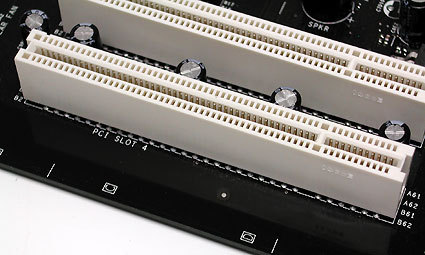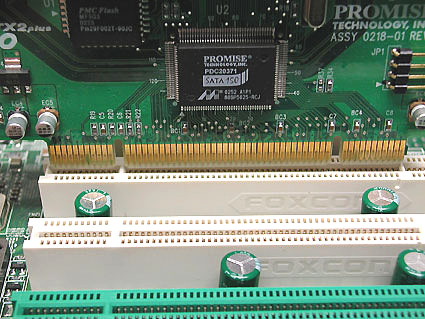PC Interfaces 101
PCI And PCI-X: The Parallel Buses
PCI is a bus standard for interfacing peripheral devices with a processor's chipset. Typical PCI products include network interface cards, modems, sound cards, and video editing boards.
On mainstream motherboards, PCI version 2.1 with 33 MHz bus clocking and 32 bit bud width is most typical. This offers bandwidth of up to 133 MBps. Vendors haven't widely adopted PCI 2.3 with 66 MHz bus clocking, so not too many compatible peripherals are available, though you will find some motherboards that support this standard.
Another development in the area of parallel PCI buses is known as PCI-X. These slots appear most frequently on workstation and server motherboards, where higher bandwidth for such devices as SCSI controllers or multi-port network interface cards is needed. As an example, PCI-X 1.0 offers bandwidth of up to 1 GBps at a bus clock of 133 MHz with 64 bit bus width.
The PCI 2.1 specification currently supports 3.3V for bus voltage. The left slot notch prevents insertion of older 5 V cards (like those show here in the picture)
Card with notch on the left, and PCI-slot with block to the left: everything fits correctly.
A RAID controller card in a 64-bit PCI-X slot
A classic 32-bit PCI slot above, with three 64-bit PCI-X slots below. The green slot offers ZCR (Zero Channel RAID) support.
Get Tom's Hardware's best news and in-depth reviews, straight to your inbox.
Glossary
- PCI = Peripheral Component Interconnect
Current page: PCI And PCI-X: The Parallel Buses
Prev Page PCI Express: The Serial Bus Next Page Power Connectors And ATX Standards-
All of the captions are attached to the wrong pictures.Reply
Ugh.
*PLEASE* leave a few blank lines between.





